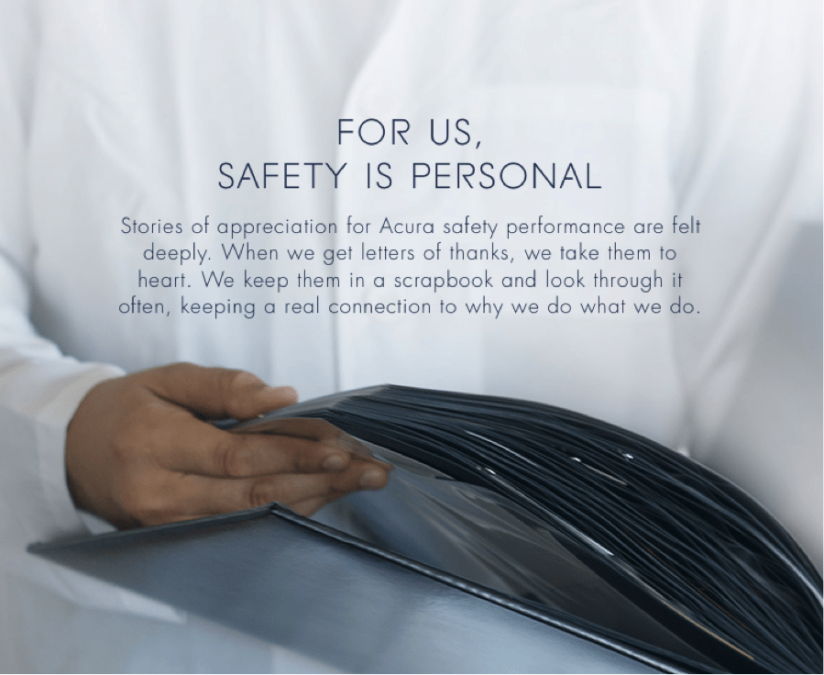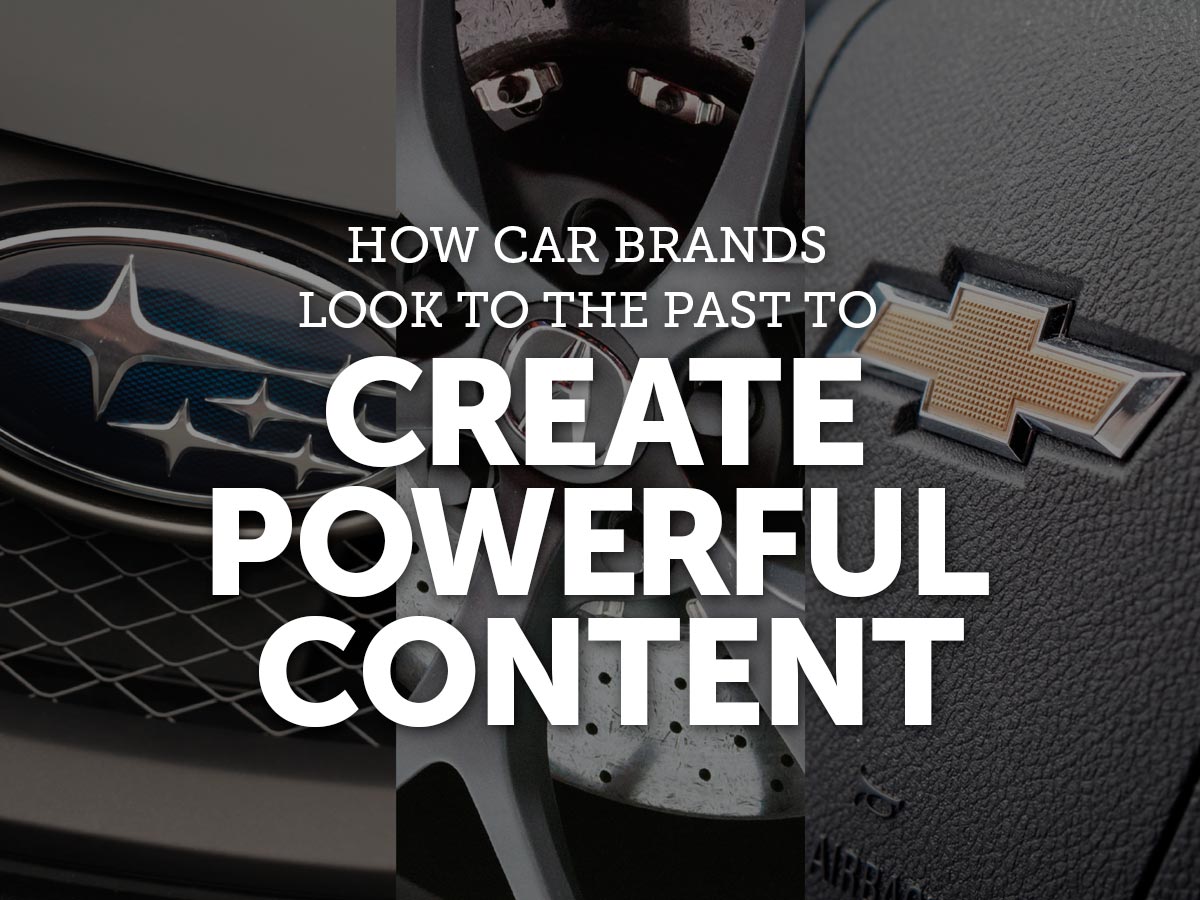Car brands are trying to sell audiences on the latest and greatest technology with some of the oldest methods in the book—more than 2,000 years old, believe it or not.
Greek philosopher Aristotle determined three ways to appeal to an audience: logos (logic), pathos (emotion) and ethos (ethics or character).
Writers, speakers and, of course, brands have always and will continue to use these strategies. No need to reinvent the wheel. The best of the bunch try to use a combination of all three to really hook customers.
Below I’ve called out some car brands, discussed the main type of persuasive power they yield in videos and give examples of how all brands can leverage these techniques.
Subaru: Logos (Logic)
Persuading by the use of reasoning, facts and figures.
Takeaway
“Subaru’s EyeSight feature beat other brands by preventing the most front-end car crashes. So, if you want to protect yourself and your family in a crash, then you should buy this car.”
The key to this video is that Subaru gives the viewers information that is very hard to dispute. The company touts its 50-year history in designing cars for crash survival, which led to the creation of the “revolutionary, industry-leading feature” called EyeSight. The brand focuses on the technology, which helps the car “see trouble and stop itself to avoid it.”
Subaru uses data and scientific research to back up its claims, citing the Insurance Institute for Highway Safety’s results for testing front-crash prevention between Subaru and other brands. That organization sounds official, doesn’t it? Viewers may walk away with a sense that they should buy a Subaru because it’s proven to be a safe car—and not just by the manufacturer, but by the aforementioned research agency as well.
The carmaker continues to employ logos when showcasing the video and EyeSight on the Subaru website. That landing page also includes an interactive graphic that boasts several Subaru models’ safety ratings compared to other top brands, which makes it simple for the viewer to access easy-to-understand information based on facts and figures.

A few ways to wield the power of logos:
- Point out the product’s characteristics and why they matter to the audience.
- Use favorable facts and data (i.e. infographics) to back up product claims.
- Use scientific research and comparisons between other brands.
- Display citations or quotes from experts or authorities about your product, its characteristics or the science behind it.
Acura: Pathos (Emotion)
Persuading by appealing to emotions, such as fear, desire, sympathy and anger.
Takeaway
“Acura engineers take safety personally because they don’t want to put their families or yours in danger. If you want to protect yourself and your family, then buy an Acura.”
This video almost brought me to tears. It shows an Acura researcher delicately placing a set of crash-test dummies that look too close to the real thing inside the car. When he walks away, you see that the dummies actually resemble him, his wife and two children, and you get the feeling that he was visualizing his family the entire time. Then the car speeds off to its expected demise against some sort of fixed object, showing the ubiquitous, faceless dummies one always expects in these sorts of commercials.
Then we suddenly see pitch-blackness. What happened to the handsome, nuclear family?! Words appear on the screen in sharp white lettering: “When you don’t think of them as dummies, something amazing happens.”
AdAge quoted Leila Cesario, national advertising manager for Acura, as saying: “Our goal here is to talk about how personal it is. It’s beyond just passing a test.”
She said Acura consulted its top safety engineers to ensure the ad accurately represented the test environment. On Acura’s safety landing page, an image underneath the video explains how much engineers take their job to heart.

“Before we even shot the ad, just talking about the ad, everyone here was emotional about it because everyone was very quickly able to relate to it,” Cesario said.
Instead of touting its safety standards with facts and figures like Subaru, Acura went the emotional route.
A few ways to wield the power of pathos:
- Use emotionally charged language and tone to engage your audience and encourage them to feel, not just see or hear, your message.
- Provide vivid descriptions and images that convey the message in a way that makes it easy for the viewer to understand and apply to their own life.
Chevrolet: Ethos (Ethics or Character)
Persuading by referring to the credibility or character of the author. We tend to believe people whom we trust, respect and admire.
Takeaway
“As a celebrated comedienne, I can say that this car and its cool features will improve your life.”
If it’s not enough to tout a vehicle’s top features or pull at the heartstrings, then why not enlist the help of a Saturday Night Live legend? That’s what Chevrolet did when it partnered with Yahoo for the Going There series. In the comedy videos, which boast Ellen DeGeneres as an executive producer, SNL alum Ana Gasteyer picks up fellow celebs in a Chevy Traverse to muse about parenting. It’s a nine-part ad aiming to make the mommy ride cool, and it’s hilarious!
Between kicks and giggles in the first episode, Gasteyer uses one of the SUV’s apps to get groceries delivered for The Office’s Jenna Fischer, a busy wife and mom who could barely steal away to film this video. The audience can sympathize with the ladies’ plights, and vice versa. The parenting struggle is real. They make it easy for other parents to relate to and trust them, despite the fact that they happen to be TV stars.
Celebrity endorsements like these tell people, “Hey, we really are just like you. You can trust us. This product worked for me, so it will work for you.”
A few ways to wield the power of ethos:
- Get credible endorsements from celebrities whom your target audience can relate to.
- Use client or customer testimonials to show how others use and appreciate various aspects or features of your product or brand.
- Use an authoritative tone of voice that reinforces the message in a way that is relatable to your audience, their lifestyle, values and needs.
Aristotle’s appeals can be identified in almost all arguments and advertisements.
Brands should use these persuasive powers strategically to appeal to the audience’s logic, emotions and belief in them. The next time your brand or company wants to reach a particular segment, think about how you can subtly mix logos, pathos and ethos to provide content you can connect with on a deeper level.



